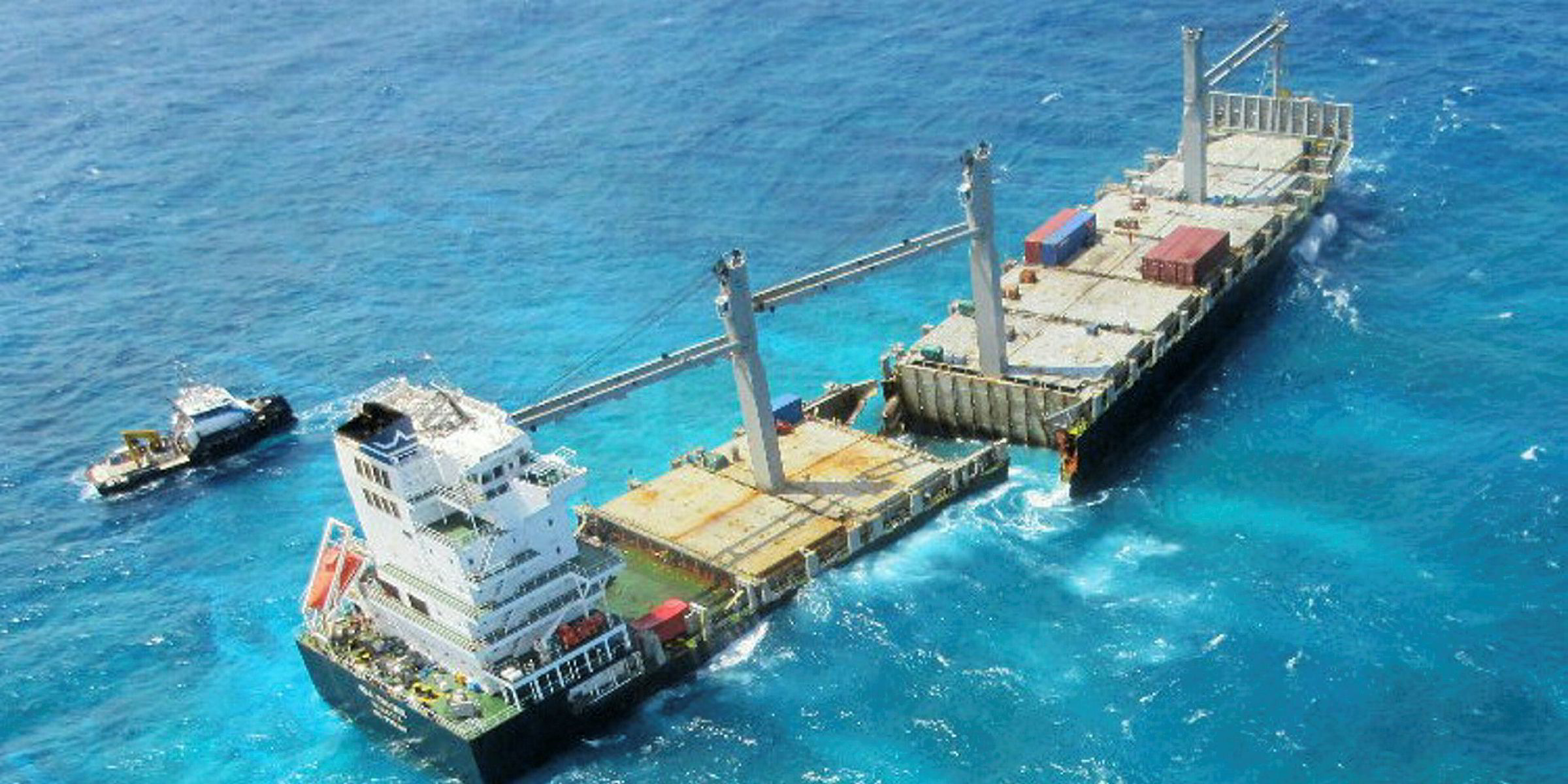Salvage companies have been asked to bid for the wreck removal of the containership Kea Trader, which has broken its back and is hard aground on the Durand Reef in the South Pacific.
The competition among salvors is bound to be intense in what will be the largest wreck removal award in recent years with the final salvage bill expected to be in the region of $100m.
2017 has been a poor year for wreck removal contracts, which form a large part of salvage companies’ income.
The tender was called by protection-and-indemnity insurer Skuld following failed attempts to refloat the wreck after the virtually brand-new 2,194-teu Kea Trader (built 2017) grounded in July.
The ship was declared a constructive total loss in September and the ship’s hull split in heavy weather in November, making refloating impossible and leading to the wreck removal contract.
The bidding is being managed and assessed by specialist London maritime consultancy TMC Marine and is understood to have attracted bids from leading players Ardent, Resolve Maritime, Smit and others. The bidders have now all made a site visit to the wreck.
Ardent is being tipped as the favourite to win the deal. It was first contracted by Skuld and the vessel’s owner Lomar Shipping to remove pollutants and containers and attempt to refloat the vessel under a Lloyd’s Open Form (LOF) contract.
The Rotterdam-based company, formed by a merger of wreck removal specialists Titan and Svitzer Salvage, has the most detailed knowledge of the condition of the wreck. It also has its own crew onboard monitoring the situation and equipment on site as it has been asked to act as caretaker of the wreck as the salvage contract bidding continues.
“Some salvors feel Ardent has a big advantage and is going to get the job and others have been asked to bid just to push the price down,” suggested one salvage expert.
But Ardent could face stiff competition from Florida-based Resolve Maritime, which successfully completed the wreck removal of the containership Rena off New Zealand — a job with which the Kea Trader wreck removal is being compared.
Like the Kea Trader, the 3,032-teu Rena (built 1990) grounded on a reef, near Tauranga in New Zealand in October 2011, and eventually broke into two.
It was a notoriously difficult wreck removal with insurer’s final salvage bill coming in at a whopping $650m.
However, there are indications that the Kea Trader could prove to be even more challenging. Firstly, the Rena was a wreck reduction rather than wreck removal with the hull sections remaining 30 metres below the lowest tide allowed to remain.
In the case of the Kea Trader, salvors have been asked for a full wreck removal.
The Rena case was made challenging for salvors because of the heavy sea conditions. However, in the case of the Kea Trader it is resting at a place that is even more remote and exposed to the weather.
The Rena was located a short distance from — and sheltered by — the New Zealand coast, and close to the city of Tauranga.
The Kea Trader, however, was in the middle of the Pacific Ocean with the closest logistical centre being the port of Noumea New Caledonia hundreds of miles away.
As a result, wreck removal equipment and crew will have to be located on site with the job expected to take over one year to complete.
And while in the case of the Rena the government of New Zealand applied strict environmental monitoring, the same standards are expected to be applied to the wreck removal of the Kea Trader as it is located in a region that is a part of the overseas territories of France.
The Kea Trader was launched in January 2017 at Guangzhou Wenchong Shipyard in China. It had been sailing from Papeete in French Polynesia to Noumea in New Caledonia with 756 containers onboard when it ran aground.



